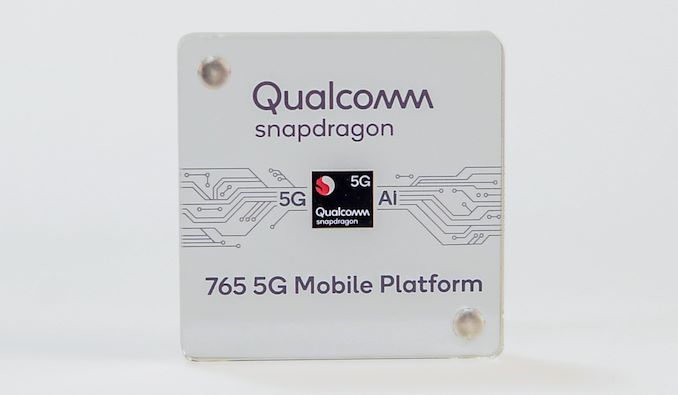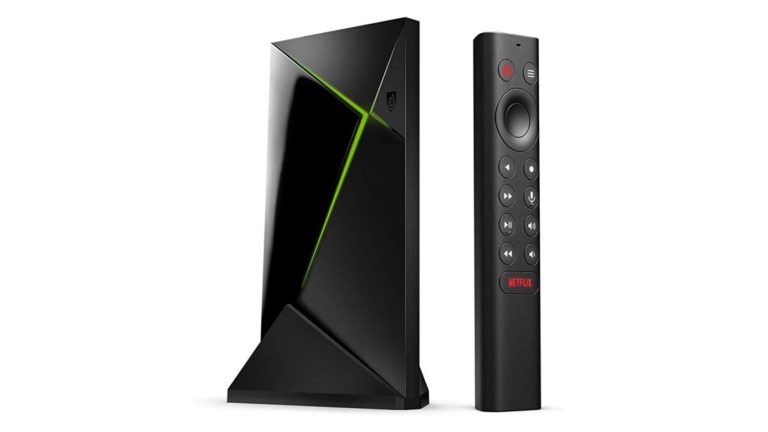Any links to online stores should be assumed to be affiliates. The company or PR agency provides all or most review samples. They have no control over my content, and I provide my honest opinion.
Qualcomm has finally announced the full specification of the Snapdragon 765G, and the slightly slower SD730. These will set a new standard for the upper mid-range market going into 2020 and it looks like many phones will have 5G moving forward.
So how does the Qualcomm Snapdragon 765G compare to the Snapdragon 730G and the more recent MediaTek Helio G90T?
While I have included the Kirin 810 in some of these comparisons, for the UK and most other countries, there have been no Kirin 810 based phones yet, due to the issues with the US political disputes.

Fabrication Process
The Snapdragon 765 has seen a switch to the new Samsung 7nm EUV (7LPP) fabrication process, which is a decent improvement compared to last years 8nm of the SD730G.
This is a huge advantage over the 12nm FinFET which the Mediatek Helio G90t.
CPU
As rumoured the Qualcomm Snapdragon 765G will stick to using the Coretex A76 based CPUs but they will receive a small to moderate frequency bump with the two performance cores operating at different frequencies.
The Snapdragon 730G had two Kryo 470 (CA76) running at 2.2GHz the Snapdragon 765 will use one running at 2.3GHz and the other at 2.2GHz.
The 730G will bump up the main core to 2.4GHz but keep the 2.2GHz for the 2nd core.
For the six A55 cores, things stay the same with them all clocked at 1.8GHz.
In comparison the Mediatek Helio G90t uses two A76 cores clocked at 2.05Ghz, however, its six A55 cores are clocked higher at 2.0Ghz.
The Kirin 810 then sits somewhere between them both with two A76 cores at 2.23 GHz and six A55 cores at 1.88 GHz.
GPU
The Snapdragon 765 and 730G has been upgraded to the Adreno 620 GPU. We don’t know too much about this year, but Qualcomm claim a 20% improvement in performance with the 765 and 38% improvement with the 765G.
The Mediatek Helio G90t uses a Mali G76 MP4 @ 800MHz and this performed at a similar spec to the Snapdragon 730G beating it in some benchmarks and losing in others. So it is likely the Snapdragon 765G will easily take the lead here.
Artificial Intelligence
The new Snapdragon 730 chipsets feature the Hexagon 696 DSP upgrading it from the Hexagon 688. Qualcomm claims this allows the chipset to perform 5.4 Tera Operations Per Second (TOPS) across all the processors on the chipset (CPU+GPU+HVX+Tensor)
In comparison, the dual APU of the Mediatek Helio G90t is rated at 1TOPs total performance
5G Modem

The big selling point of the new Qualcomm chipset is the fact they are the first mid-range chipset to launch with an integrated 5G modem with the Snapdragon X52. This, therefore, means Qualcomm is going all-in with 5G for 2020, while the SD865 doesn’t have an integrated 5G modem, it will only be shipped with the X55 external modem.
The Mediatek Helio G90t and Kirin 810 are LTE only.
Antutu Benchmarks
Leaked benchmarks have been released showing moderate gains from the previous generation and putting Qualcomm back in the top spot for upper mid-range chipsets.
| Chipset | Total | CPU | GPU | MEM | UX | |
|---|---|---|---|---|---|---|
| OnePlus 7T | Snapdragon 855+ | 487050 | 144155 | 199255 | 70043 | 73597 |
| Realme X2 Pro | Snapdragon 855+ | 473329 | 142596 | 190964 | 799966 | 59803 |
| Black Shark | Snapdragon 855 | 442971 | ||||
| Xiaomi Mi Mix 3 5G | Snapdragon 855 | 429859 | 144036 | 172351 | 56044 | 57428 |
| Xiaomi Redmi K30 5G (Leaked score) | Snapdragon 765G | 302847 | 98651 | 87564 | 57985 | 58647 |
| Xiaomi Redmi Note 8 Pro | Mediatek Helio G90T | 281295 | 98263 | 79755 | 57285 | 45992 |
| Realme X2 | Snapdragon 730G | 258311 | 98328 | 67574 | 47945 | 44464 |
| Realme 5 Pro | Snapdragon 712 | 216501 | 73459 | 61872 | 42013 | 39157 |
| Honor 9X | Kirin 710F | 172710 | 64742 | 21250 | 50747 | 35971 |
| Realme 5 | Snapdragon 665 | 167866 | 71157 | 33489 | 36568 | 26652 |
So how much do those numbers differ from the Snapdragon 730G and Mediatek Helio G90T?
| Chipset | Total | CPU | GPU | MEM | UX | |
|---|---|---|---|---|---|---|
| Realme X2 | Snapdragon 730G | 17% | 0.32% | 29.5% | 20.9% | 31.8% |
| Xiaomi Redmi Note 8 Pro | Mediatek Helio G90T | 7.7% | 0.39% | 9.8% | 1.2% | 27.5% |
The numbers stated by Qualcomm seem relatively accurate with a 29% performance bump with the GPU and 17% overall. However, the CPU has barely seen any improvement, and the improvement is less impressive when you compare it to the Mediatek Helio G90T.
Specification Comparison Table
| MediaTek Helio P95 | Snapdragon 765G | Snapdragon 730G | Mediatek Helio G90t | Kirin 810 | |
|---|---|---|---|---|---|
| Process | TSMC 12 nm FinFET | Samsung 7nm EUV (7LPP) | 8nm LPP | 12nm FinFET | 7nm |
| CPU Cores | Octa-Core, 64-bit | Octa-Core, 64-bit | Octa-Core, 64-bit | Octa-Core, 64-bit | Octa-Core, 64-bit |
| CPU | 2x Cortex-A75 @ 2.2 GHz 6x Cortex-A55 @ 2GHz | 1x Kryo 475 Prime (CA76) @ 2.4GHz 1x Kryo 475 Gold (CA76) @ 2.2GHz 6x Kryo 475 Silver (CA55) @ 1.8GHz | 2x Kryo 470 (CA76) @ 2.2GHz 6x Kryo 470 (CA55) @ 1.8GHz | 2x Cortex A76 @ 2.05GHz 6x Cortex A55 @ 2.0GHz | 2x Cortex-A76 @ 2.23 GHz 6x Cortex-A55 @ 1.88 GHz |
| GPU | IMG PowerVR GM 9446 @ 970 MHz | Adreno 620 +38% perf (765G) | Adreno 618 | Mali G76 MP4 @ 800MHz | Mali G52MP6 @ 820MHz |
| DSP / NPU | APU 2.0 (10% improvement) | Hexagon 696 HVX + Tensor 5.4TOPS AI (Total CPU+GPU+HVX+Tensor) | Hexagon 688 HVX + Tensor | 2x APU +1TOPs total perf | Dual NPU |
| RAM | LPDDR4x up to 8GB, 1866MHz | 2x 16-bit CH @ 2133MHz LPDDR4X / 17.0GB/s | 2x 16-bit CH @ 2133MHz LPDDR4X / 17.0GB/s | LPDDR4x up to 10GB, 2133MHz | LPDDR4X @ 2133MHz |
| Camera | Single 64MP Dual 24MP + 16MP | Dual 14-bit Spectra 355 ISP 1x 192MP or 36MP with ZSL or 2x 22MP with ZSL | Spectra 350 Dual: 22 MP, MFNR, ZSL,30 fps Single:36 MP, MFNR, ZSL,30 fps Single: 48 MP, MFNR Single: 192 MP | Single 64MP and 48MP Dual 24MP + 16MP | Dual ISP |
| Video Encode/Decode | 2160p60 10-bit H.265 HDR10, HDR10+, HLG 720p480 | 2160p30, 1080p120 H.264 & H.265 10-bit HDR pipelines | 2160p30, 1080p120 H.264 & H.265 10-bit HDR pipelines | 2160p60 10-bit H.265 HDR10, HDR10+, HLG 720p480 | 2160p60 10-bit H.265 HDR10, HDR10+, HLG 720p480 |
| Modem | LTE | Snapdragon X52 Integrated (LTE Category 24/22) DL = 1200 Mbps 4x20MHz CA, 256-QAM UL = 210 Mbps 2x20MHz CA, 256-QAM (5G NR Sub-6 4x4 100MHz + mmWave 2x2 400MHz) DL = 3700 Mbps UL = 1600 Mbps | Snapdragon X15 LTE (Category 15/13) DL = 800Mbps 3x20MHz CA, 256-QAM UL = 150Mbps 2x20MHz CA, 64-QAM | LTE | LTE |
I am James, a UK-based tech enthusiast and the Editor and Owner of Mighty Gadget, which I’ve proudly run since 2007. Passionate about all things technology, my expertise spans from computers and networking to mobile, wearables, and smart home devices.
As a fitness fanatic who loves running and cycling, I also have a keen interest in fitness-related technology, and I take every opportunity to cover this niche on my blog. My diverse interests allow me to bring a unique perspective to tech blogging, merging lifestyle, fitness, and the latest tech trends.
In my academic pursuits, I earned a BSc in Information Systems Design from UCLAN, before advancing my learning with a Master’s Degree in Computing. This advanced study also included Cisco CCNA accreditation, further demonstrating my commitment to understanding and staying ahead of the technology curve.
I’m proud to share that Vuelio has consistently ranked Mighty Gadget as one of the top technology blogs in the UK. With my dedication to technology and drive to share my insights, I aim to continue providing my readers with engaging and informative content.







